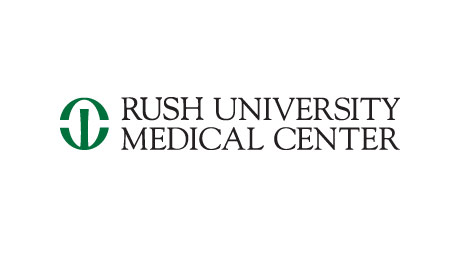Doxorubicin Hydrochloride Liposome and Rituximab With Combination Chemotherapy in Treating Patients With Newly Diagnosed Burkitt's Lymphoma or Burkitt-Like Lymphoma
| Status: | Active, not recruiting |
|---|---|
| Conditions: | Lymphoma |
| Therapuetic Areas: | Oncology |
| Healthy: | No |
| Age Range: | 18 - Any |
| Updated: | 3/17/2017 |
| Start Date: | October 2006 |
| End Date: | October 2019 |
A Multicenter Phase II Study Incorporating DOXIL® and Rituximab Into the Magrath Regimen for HIV-Negative and HIV-Positive Patients With Newly Diagnosed Burkitt's and Burkitt-like Lymphoma
RATIONALE: Drugs used in chemotherapy, such as doxorubicin hydrochloride liposome, work in
different ways to stop the growth of cancer cells, either by killing the cells or by
stopping them from dividing. Monoclonal antibodies, such as rituximab, can block cancer
growth in different ways. Some block the ability of cancer cells to grow and spread. Others
find cancer cells and help kill them or carry cancer-killing substances to them. Giving
rituximab together with combination chemotherapy may kill more cancer cells.
PURPOSE: This phase II trial is studying how well giving doxorubicin hydrochloride liposome
and rituximab together with combination chemotherapy works in treating patients with newly
diagnosed Burkitt's lymphoma or Burkitt-like lymphoma.
different ways to stop the growth of cancer cells, either by killing the cells or by
stopping them from dividing. Monoclonal antibodies, such as rituximab, can block cancer
growth in different ways. Some block the ability of cancer cells to grow and spread. Others
find cancer cells and help kill them or carry cancer-killing substances to them. Giving
rituximab together with combination chemotherapy may kill more cancer cells.
PURPOSE: This phase II trial is studying how well giving doxorubicin hydrochloride liposome
and rituximab together with combination chemotherapy works in treating patients with newly
diagnosed Burkitt's lymphoma or Burkitt-like lymphoma.
OBJECTIVES:
Primary
- Determine the overall response rate (complete remission, complete remission
undetermined, and partial remission) in HIV-negative or HIV-positive patients with
newly diagnosed Burkitt's or Burkitt-like lymphoma treated with doxorubicin
hydrochloride liposome and rituximab as part of the Magrath regimen.
Secondary
- Determine the complete remission rate in patients treated with this regimen.
- Determine progression-free and overall survival at 2 years in patients treated with
this regimen.
- Determine the safety of adding rituximab to the standard Magrath regimen in these
patients.
- Determine the safety of using doxorubicin hydrochloride liposome in place of
doxorubicin hydrochloride in these patients.
- Determine correlative levels of rituximab and doxorubicin hydrochloride liposome in
cerebrospinal fluid and peripheral blood.
OUTLINE: This is a multicenter study. Patients are stratified according to risk category
(low risk vs high risk). Patients are assigned to 1 of 2 treatment regimens according to
stratum.
- Regimen A (low-risk disease with no CNS involvement): Patients receive R-CODOX-M
chemotherapy comprising rituximab IV over 2-4 hours on days 0 and 8; doxorubicin
hydrochloride liposome IV over 30 minutes on day 1; vincristine IV on days 1 and 8;
cyclophosphamide IV over 1 hour on days 1-5; and high-dose methotrexate (MTX) IV over
24 hours on day 10. Patients also receive leucovorin calcium IV beginning 36 hours
after the start of MTX infusion and continuing every 6 hours until blood levels of MTX
are safe. Patients also receive filgrastim (G-CSF) subcutaneously (SC) once daily on
days 4-8 in courses 1 and 3 and on days 6 and 7 in course 2. Beginning on day 12, daily
G-CSF dosing resumes until blood counts recover. Patients receive CNS prophylaxis
comprising cytarabine intrathecally (IT) on day 1 and MTX IT on day 3. Treatment
repeats every 28 days for 3 courses in the absence of disease progression or
unacceptable toxicity.
- Regimen B (high-risk disease with or without CNS involvement): Patients receive
R-CODOX-M chemotherapy with leucovorin calcium and G-CSF support as in regimen A for
courses 1 and 3 and R-IVAC chemotherapy with leucovorin calcium and G-CSF support (as
below) for courses 2 and 4. R-IVAC chemotherapy comprises high-dose ifosfamide IV over
3 hours and etoposide IV over 1 hour on days 1-5; cytarabine IV over 3 hours twice
daily on days 2 and 3; and rituximab IV over 2-4 hours on day 0 and on day 6 or 7.
Patients also receive leucovorin calcium orally every 6 hours on day 6 and G-CSF SC
once daily beginning on day 6 or 7 and continuing until blood counts recover. Patients
without CNS involvement receive CNS prophylaxis comprising cytarabine IT on days 1 and
3 and MTX IT on day 15 in courses 1 and 3 and MTX IT alone on day 5 in courses 2 and 4.
Patients with proven CNS involvement at diagnosis receive cytarabine IT on days 1, 3,
and 5 in course 1, on days 7 and 9 in course 2, and on days 1 and 3 in course 3. These
patients also receive MTX IT on days 15 and 17 in course 1, on day 5 in courses 2 and
4, and on day 15 in course 3. Treatment repeats every 28 days for 4 courses in the
absence of disease progression or unacceptable toxicity.
The first 10 patients enrolled on the study undergo cerebrospinal fluid and blood collection
during courses 1 and 3 for correlative biological marker and pharmacological studies.
After completion of study treatment, patients are followed at 30 days and then periodically
for up to 3 years.
PROJECTED ACCRUAL: A total of 25 patients will be accrued for this study.
Primary
- Determine the overall response rate (complete remission, complete remission
undetermined, and partial remission) in HIV-negative or HIV-positive patients with
newly diagnosed Burkitt's or Burkitt-like lymphoma treated with doxorubicin
hydrochloride liposome and rituximab as part of the Magrath regimen.
Secondary
- Determine the complete remission rate in patients treated with this regimen.
- Determine progression-free and overall survival at 2 years in patients treated with
this regimen.
- Determine the safety of adding rituximab to the standard Magrath regimen in these
patients.
- Determine the safety of using doxorubicin hydrochloride liposome in place of
doxorubicin hydrochloride in these patients.
- Determine correlative levels of rituximab and doxorubicin hydrochloride liposome in
cerebrospinal fluid and peripheral blood.
OUTLINE: This is a multicenter study. Patients are stratified according to risk category
(low risk vs high risk). Patients are assigned to 1 of 2 treatment regimens according to
stratum.
- Regimen A (low-risk disease with no CNS involvement): Patients receive R-CODOX-M
chemotherapy comprising rituximab IV over 2-4 hours on days 0 and 8; doxorubicin
hydrochloride liposome IV over 30 minutes on day 1; vincristine IV on days 1 and 8;
cyclophosphamide IV over 1 hour on days 1-5; and high-dose methotrexate (MTX) IV over
24 hours on day 10. Patients also receive leucovorin calcium IV beginning 36 hours
after the start of MTX infusion and continuing every 6 hours until blood levels of MTX
are safe. Patients also receive filgrastim (G-CSF) subcutaneously (SC) once daily on
days 4-8 in courses 1 and 3 and on days 6 and 7 in course 2. Beginning on day 12, daily
G-CSF dosing resumes until blood counts recover. Patients receive CNS prophylaxis
comprising cytarabine intrathecally (IT) on day 1 and MTX IT on day 3. Treatment
repeats every 28 days for 3 courses in the absence of disease progression or
unacceptable toxicity.
- Regimen B (high-risk disease with or without CNS involvement): Patients receive
R-CODOX-M chemotherapy with leucovorin calcium and G-CSF support as in regimen A for
courses 1 and 3 and R-IVAC chemotherapy with leucovorin calcium and G-CSF support (as
below) for courses 2 and 4. R-IVAC chemotherapy comprises high-dose ifosfamide IV over
3 hours and etoposide IV over 1 hour on days 1-5; cytarabine IV over 3 hours twice
daily on days 2 and 3; and rituximab IV over 2-4 hours on day 0 and on day 6 or 7.
Patients also receive leucovorin calcium orally every 6 hours on day 6 and G-CSF SC
once daily beginning on day 6 or 7 and continuing until blood counts recover. Patients
without CNS involvement receive CNS prophylaxis comprising cytarabine IT on days 1 and
3 and MTX IT on day 15 in courses 1 and 3 and MTX IT alone on day 5 in courses 2 and 4.
Patients with proven CNS involvement at diagnosis receive cytarabine IT on days 1, 3,
and 5 in course 1, on days 7 and 9 in course 2, and on days 1 and 3 in course 3. These
patients also receive MTX IT on days 15 and 17 in course 1, on day 5 in courses 2 and
4, and on day 15 in course 3. Treatment repeats every 28 days for 4 courses in the
absence of disease progression or unacceptable toxicity.
The first 10 patients enrolled on the study undergo cerebrospinal fluid and blood collection
during courses 1 and 3 for correlative biological marker and pharmacological studies.
After completion of study treatment, patients are followed at 30 days and then periodically
for up to 3 years.
PROJECTED ACCRUAL: A total of 25 patients will be accrued for this study.
DISEASE CHARACTERISTICS:
- Histologically confirmed Burkitt's or Burkitt-like non-Hodgkin's lymphoma meeting 1
of the following risk criteria:
- Low-risk disease meeting all of the following criteria:
- Normal lactate dehydrogenase level
- ECOG performance status 0-1
- Ann Arbor stage I or II
- No tumor mass over 10 cm in greatest diameter
- High-risk disease, defined as disease not meeting low-risk criteria
- Newly diagnosed disease
PATIENT CHARACTERISTICS:
- ECOG performance status 0-2
- Not pregnant or nursing
- Negative pregnancy test
- Fertile patients must use effective contraception
- Hemoglobin ≥ 8.0 g/dL
- Absolute neutrophil count ≥ 500/mm³
- Platelet count ≥ 100,000/mm³ (50,000/mm³ if bone marrow involvement is documented)
- AST and ALT ≤ 3 times upper limit of normal (ULN)
- Alkaline phosphatase ≤ 3 times ULN
- Bilirubin ≤ 1.5 times ULN (3 times ULN if liver metastases are present)
- Creatinine clearance > 50 mL/min
- Creatinine ≤ 2.0 mg/dL
- LVEF ≥ 45% by MUGA scan or echocardiogram
- No New York Heart Association class II-IV heart failure
- No clinically significant pericardial disease
- No myocardial infarction within the past 6 months
- No uncontrolled angina
- No severe uncontrolled ventricular arrhythmias
- No ECG evidence of acute ischemia or active conduction system abnormalities
- Investigator must document any baseline ECG abnormality as not medically
relevant
- No other malignancy within the past year except for basal cell carcinoma of the skin
or in situ carcinoma of the cervix
- No other serious medical or psychiatric illness that would preclude study compliance
PRIOR CONCURRENT THERAPY:
- Prior treatment with 1 course of any combination of rituximab, cyclophosphamide,
doxorubicin hydrochloride, vincristine, and/or prednisone* (CHOP)-like therapy
allowed, provided the following doses are not exceeded:
- Rituximab 750 mg/m²
- Cyclophosphamide 1,000 mg/m²
- Doxorubicin hydrochloride 50 mg/m²
- Vincristine 2 mg/m²
- No other investigational drugs within the past 14 days
- No other concurrent systemic, cytotoxic, investigational, or chemotherapy agents
NOTE: *No maximum dose restriction on steroids
We found this trial at
8
sites
Loyola University Medical Center Loyola University Health System is committed to excellence in patient care...
Click here to add this to my saved trials
675 N Saint Clair St # 21-100
Chicago, Illinois 60611
Chicago, Illinois 60611
(312) 695-1156

Robert H. Lurie Comprehensive Cancer Center at Northwestern University The cancer center was first established...
Click here to add this to my saved trials
Washington University Washington University creates an environment to encourage and support an ethos of wide-ranging...
Click here to add this to my saved trials
Rush University Medical Center Rush University Medical Center encompasses a 664-bed hospital serving adults and...
Click here to add this to my saved trials
Click here to add this to my saved trials
Click here to add this to my saved trials
Click here to add this to my saved trials
Click here to add this to my saved trials


